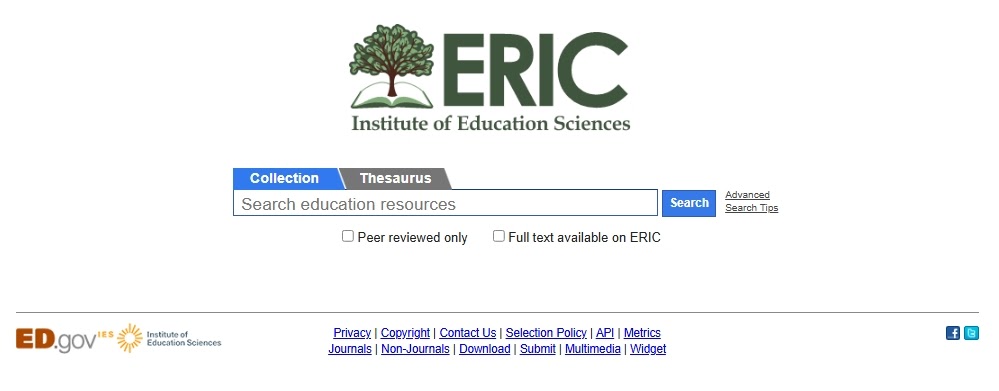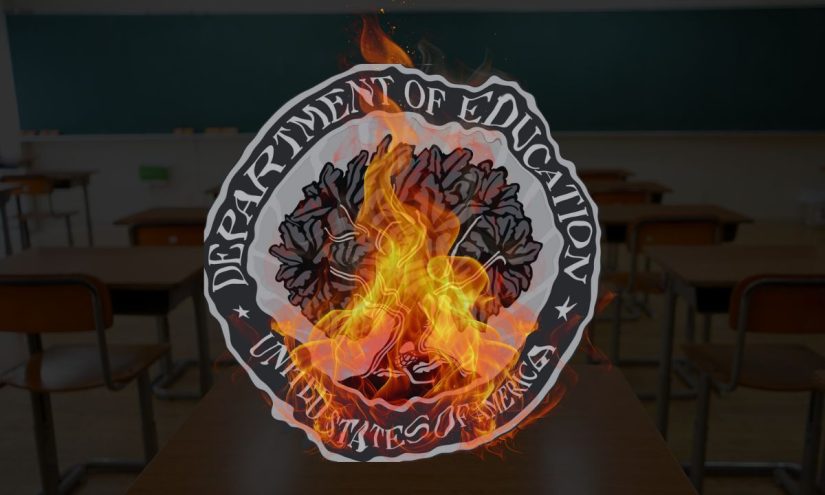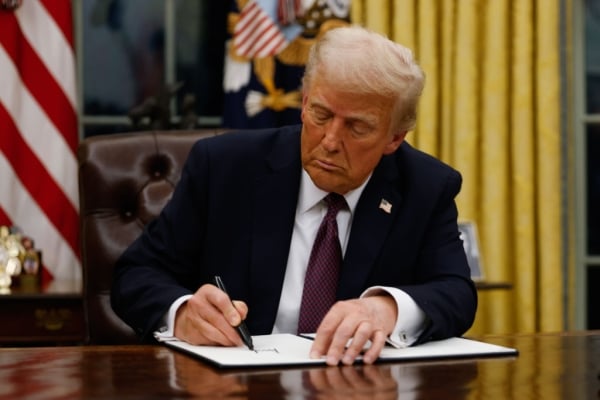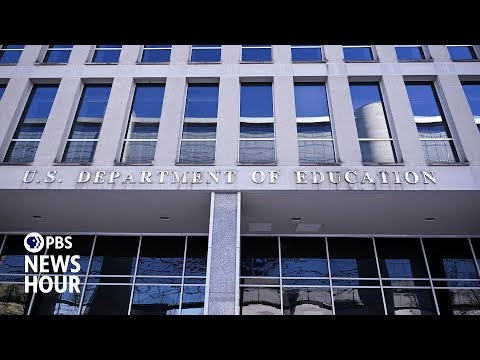This story will be updated.
President Donald Trump is planning to sign an executive order directing Education Secretary Linda McMahon to “take all necessary steps” to close the agency, The Wall Street Journal and other media outlets reported.
The president’s order—scheduled to be signed at 2 p.m. in the Oval Office—is the first step in carrying out his controversial campaign promise to abolish the 45-year-old department. A draft of the order provided to Inside Higher Ed criticizes the department for spending “more than $1 trillion without producing virtually any improvement in student reading and mathematics scores.” Trump’s press secretary called reports about the order “fake news.”
Education advocates have already shown staunch opposition to the executive action. The American Federation of Teachers, a key higher ed union, was one of the first groups to pipe up when the news broke Wednesday evening, calling the order a government attempt to “abdicate its responsibility to all children, students and working families.”
“The Department of Education, and the laws it is supposed to execute, has one major purpose: to level the playing field and fill opportunity gaps to help every child in America succeed,” union president Randi Weingarten said in a statement. “No one likes bureaucracy, and everyone’s in favor of more efficiency, so let’s find ways to accomplish that. But don’t use a ‘war on woke’ to attack the children living in poverty and the children with disabilities, in order to pay for vouchers and tax cuts for billionaires.”
The president and his allies have promoted the idea of dismantling the agency since the early days of his 2024 campaign, saying the department has grown too big and interferes in matters best left to local and state authorities. They also argue the agency’s existence violates the Constitution (because the document doesn’t mention education) and is a prime example of federal bloat and excess.
Read More on Trump’s Plans to Break Up the Department
Such an order has been rumored for weeks, and higher education officials have been nervously waiting for the shoe to drop since McMahon was confirmed by the Senate Monday afternoon. But the secretary backed plans to break up or diminish the department at her confirmation last month, and shortly after taking office, she wrote to agency staff about their “momentous final mission,” which includes overhauling the agency and eliminating “bureaucratic bloat.” She never did directly use the words “dismantle” or “abolish” but pledged to “send education back to the states.”
“As I’ve learned many times throughout my career, disruption leads to innovation and gets results,” she wrote. “We must start thinking about our final mission at the department as an overhaul—a last chance to restore the culture of liberty and excellence that made American education great.”
Eliminating the Education Department and sending key programs such as the Office for Civil Rights to other agencies was a key part of the conservative blueprint Project 2025’s plans to reshape education policy in America. But recent public opinion polls have found support for keeping the agency.
One survey conducted by the progressive think tank Data for Progress, on behalf of the Student Borrower Protection Center, a left-wing advocacy group, showed that 61 percent of all respondents “somewhat” or “strongly” opposed the idea of eliminating the department. Another poll from Morning Consult, a data-driven insights company, showed that a large chunk of voters—41 percent—actually want to increase funding to the department.
The order doesn’t mean the department will close tomorrow or even this month, as it calls for the secretary to create a plan to wind down operations. McMahon also told senators during her confirmation that only Congress can shut down the agency altogether.
Higher Ed Officials Brace for Impact
As talks about the department’s demise ramped up in recent weeks, lawmakers, student advocacy groups, civil rights organizations and left-leaning think tanks warned how destructive dismantling the department could be.
Democrats in the House started pushing back on the idea as early as Feb. 10, when they walked directly up to the department’s front doors and demanded a meeting with then–acting education secretary Denise Carter. Denied entry, they argued the department’s existence is key to supporting students with disabilities and making higher education accessible to all.
That same week, several key senators wrote a letter to the department outlining their “serious concerns” about its actions.
“We will not stand by and allow the impact that dismantling the Department of Education would have on the nation’s students, parents, borrowers, educators, and communities,” the lawmakers wrote.
Derrick Johnson, president of the National Association for the Advancement of Colored People, put out a statement expressing similar concerns for students of color just minutes after McMahon was confirmed. The NAACP played a key role in the landmark 1954 Supreme Court case Brown v. Board of Education, which outlawed racial segregation in public schools, and has been a longtime advocate for equality and opportunity in education. He said that protecting the Department of Education is critical, since the agency not only funds public schools, but “enforces essential civil rights laws.”
“This is an agency we cannot afford to dismantle,” he said.
On Tuesday morning, EdTrust, a nonprofit policy and advocacy group, said America has reached “a dangerous turning point for public education.”
“Simply put: If we are truly to reach America’s ‘Golden Age,’ we need to build a better, stronger Department of Education, not tear it down altogether,” the organization wrote in a statement.
Kevin Carey, vice president of education at New America, a left-leaning think tank, said in a statement that eliminating the department is a “deeply unpopular idea,” citing the organization’s own new polling data.
The survey found that over all only 26 percent of adults support the department’s closure. And though the Trump administration says it is carrying out the will of the people who elected him to office, barely half of Republicans want closure. Even fewer members of the GOP support the specific consequences of shuttering the department, like moving federal financial aid to an agency with no experience overseeing the program.
“This is all part of the standard authoritarian playbook for would-be dictators engaged in tearing down democratic institutions,” Carey wrote. Dismantling the department would be “a nihilistic act of civic vandalism, carried out by ideological zealots.”
Gathering Congressional Support
But Carey and others also note that, ultimately, the Trump administration lacks the legal authority to actually close the Department of Education, making full abolishment more complicated than the president suggests.
Shuttering the agency would require 60 votes in the Senate as well as a majority in the House, as the department’s existence is written into statute. And with a 53-seat majority in the Senate, Republicans don’t currently have the votes unless some Democrats back the plan.
Still, Trump has continued to promote the concept, and red states across the country have backed it. Although the president has not disclosed specific details on how he would try to overcome the political and legal hurdles, higher education policy experts predict he’s likely to leave the skeleton of the department standing while gutting the agency of everything but its statutorily protected duties.
Conservative groups, most notably the Heritage Foundation, have suggested redistributing responsibilities by moving programs to other agencies. For example, the federal student loan system could be moved to the Treasury, and the Office for Civil Rights could be moved to the Department of Justice.
Critics of the idea say that such proposals need more specifics that spell out how exactly the plan would work, what programs would stay, which ones would go away and what agencies would take over the department’s responsibilities.
However, higher ed policy experts from the Cato Institute, a libertarian think tank, say getting rid of the department is “a good idea.” They describe the department as “unconstitutional,” given education is mentioned nowhere in the specific, enumerated powers given to the federal government, and call it “ineffective,” “incompetent,” “expensive” and “unnecessary.”
The founding fathers chose to exclude dominion over education from the Constitution “because education was believed best left in the hands of parents and civil society—the families and communities closest to the children—and certainly not in a distant national government,” Neal McCluskey, director of Cato’s Center for Educational Freedom, wrote in a policy handbook. “Nearly 60 years of experience with major and, until very recently, constantly expanding federal meddling in K-12 education have proved them right.”









